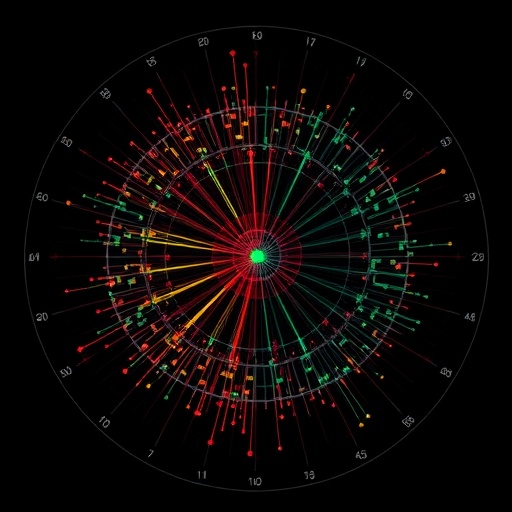Mass. General team finds transcriptome-wide effects of two classes of base editors, develops variants with substantially less off-target impact
A Massachusetts General Hospital (MGH) research team reports that several of the recently developed CRISPR base editors, which create targeted changes in a single DNA base, can induce widespread off-target effects in RNA, extending beyond the targeted DNA. Their report receiving advance online publication in Nature also describes engineering variant base editors that significantly reduced the incidence of RNA edits while also increasing the precision of on-target DNA editing.
“Most investigation of off-target base editing has focused on DNA, but we have found that this technology can induce large numbers of RNA alterations as well,” says J. Keith Joung, MD, PhD, of the MGH Department of Pathology and senior author of the Nature report. “This surprising finding suggests the need to look at more than just genetic alterations when considering unintended off-target effects of base editors in cells. We also show the feasibility of reducing these effects by creating variants that selectively reduce off-target RNA editing while preserving the intended on-target DNA activity.”
In contrast to CRISPR-Cas gene-editing nucleases, which induce targeted double-strand DNA breaks in order to make genetic changes, CRISPR base editors are able to change a single nucleotide in a DNA strand without inducing such breaks. While CRISPR-Cas nucleases can be compared with scissors, Joung explains, base editors can be compared to a pencil. Fusion proteins that use a modified form of CRISPR-Cas for guidance to the target site, base editors use an enzyme called a deaminase to modify a specific nucleotide, thereby creating changes that can lead to specific DNA alterations – for example, changing cytosine into thymine.
Although most researchers have focused on the DNA-editing activities of base editors, the deaminase in the most commonly used cytosine-to-thymine editor was originally identified for its ability to modify RNA. This led the MGH team to investigate whether it might induce off-target RNA effects. Their experiments in both liver and embryonic kidney cell lines showed that, while the commonly used base editor they tested induced efficient edits at the target DNA site, it also led to tens of thousands of cytosine-to-uracil edits throughout the transcriptome, the full range of transcribed RNA in a cell. They found similar results when they tested one of the newer adenine-targeting base editors.
To investigate the possibility of reducing or eliminating unwanted RNA edits, the MGH team screened 16 editors with engineered versions of the deaminase enzymes, identifying two that were as efficient as the original version in inducing on-target DNA effects while inducing markedly fewer RNA edits. In fact, these SECURE (SElective Curbing of Unwanted RNA Editing) variants were even more precise than the unaltered deaminase in inducing the desired DNA edits.
“We were quite surprised at the number – tens of thousands – of RNA edits and the frequency of these alterations that we observed with the two classes of base editors,” says lead author Julian Grünewald, MD, MGH Molecular Pathology and Harvard Medical School. “We were also glad to see that we could substantially reduce those unwanted RNA edits with our SECURE base editor variants.”
Joung notes that investigating any potential impact of these RNA effects on experimental and clinical applications of CRISPR base editing is an important next step his team is taking. “We showed that the widely used cytosine base editor we studied has a modest effect on cell viability when expressed in one human cell line, while the SECURE variants do not. For research applications, scientists using base editors will need to account for potential RNA off-target effects in their experiments. For therapeutic applications, our results further argue for limiting the duration of base-editor expression to the shortest length of time possible and the importance of minimizing and accounting for potential impacts of these effects in safety assessments.”
A professor of Pathology at Harvard Medical School, Joung adds, “Another important area of ongoing work is extending our efforts to minimize these unwanted off-target RNA edits. We are currently attempting to engineer SECURE adenine base editors and exploring the off-target RNA effects of cytosine base editors that use other deaminase enzymes than the one in the editor we investigated. Our goal is to generate a suite of base editors with minimized RNA editing activities that can be used for both research and therapeutic applications.”
Plasmids encoding SECURE variant base editors will be available from the plasmid repository Addgene at http://www.
###
Additional co-authors of the Nature paper are Ronghao Zhou, Sara Garcia, PhD, Sowmya Iyer, PhD, Caleb Lareau and Martin Aryee, PhD, all of MGH Molecular Pathology. The study was supported by Defense Advanced Research Projects Agency contract HR0011-17-2-0042; National Institutes of Health grants RM1 HG009490 and R35 GM118158, and the Desmond and Ann Heathwood MGH Research Scholar Award.
Massachusetts General Hospital, founded in 1811, is the original and largest teaching hospital of Harvard Medical School. The MGH Research Institute conducts the largest hospital-based research program in the nation, with an annual research budget of more than $925 million and major research centers in HIV/AIDS, cardiovascular research, cancer, computational and integrative biology, cutaneous biology, genomic medicine, medical imaging, neurodegenerative disorders, regenerative medicine, reproductive biology, systems biology, photomedicine and transplantation biology. The MGH topped the 2015 Nature Index list of health care organizations publishing in leading scientific journals and earned the prestigious 2015 Foster G. McGaw Prize for Excellence in Community Service. In August 2018 the MGH was once again named to the Honor Roll in the U.S. News & World Report list of “America’s Best Hospitals.”
Media Contact
Noah Brown
[email protected]
http://dx.




